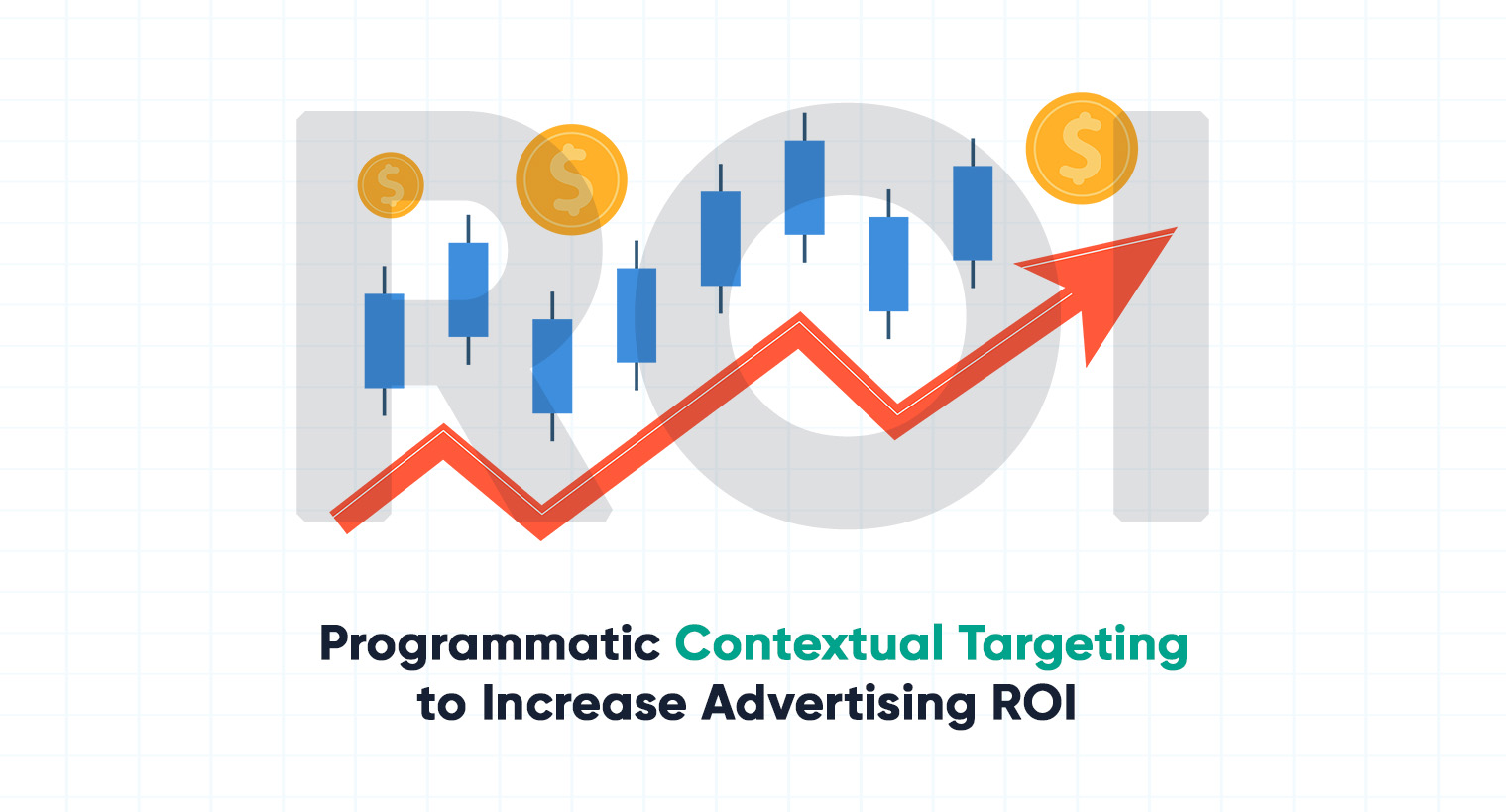How does Programmatic Contextual Targeting Help in ROI Increase? | 02 Jun, 2022

Contextual targeting is not something new that is hitting the advertisement industry. Time and again, it has helped advertisers reach their relevant audiences at the right time and place.
However, it is always a good idea to look for platforms that can catalyze the process further, and programmatic contextual targeting is exactly that!
The main motive of all brands is to see an uptick in the number of clicks and get a good return on their programmatic advertising (ROI) and contextual targeting has proved to be the best place to get started.
Contextual targeting has enabled advertisers to deliver highly targeted programmatic ads across a variety of online advertising platforms.
Moreover, this has helped in campaign effectiveness by allowing you to distribute these highly targeted, relevant advertising across a variety of media without developing several ad copies.
What is Programmatic Contextual Targeting?
The use of AI for acquiring advertising space is known as programmatic advertising or programmatic media buying. Data insights and algorithms are used to offer advertisements to the right person at the right time and at the right price.
With time, the popularity of programmatic advertising is rising. Projections are estimated that by 2021 $155 billion was spent on it globally. So, it’s not a surprise that more marketers are experimenting with programmatic ads.
Contextual targeting is one of the simplest ways to get started with programmatic advertising by utilizing terms that describe your product or service.
It helps in engaging new consumers on a large scale which is efficient for display advertising campaigns, including video and native advertisements. It has long been employed in search advertisements, but until recently, it was maybe employed in programmatic advertising.
So, let’s take a closer look at contextual advertising and how it works in conjunction with programmatic, thus helping companies increase their ROI.
Understanding Contextual Advertising and How it Works?
Contextual advertising is a tried and tested technique. It’s not something new, but it took a back seat for some time owing to the popularity of behavioral targeting.
However, with the adoption of new privacy laws all over the world and the decision by multinational companies like Google and Apple to ban third-party cookies, contextual targeting practices are rising again.
The technique of showing ads on web pages depending on their content is known as contextual advertising. It is the most effective method for companies to target people in a secure and privacy-compliant manner.
For example, you may have seen advertisements for running shoes in a news item about a 100-kilometer marathon or advertisements for headphones on a computer-selling eCommerce website.
Because contextual targeting includes segmenting advertising based on variables such as keyword or website subject, contextual advertising becomes more successful when combined with programmatic advertising.
Instead of matching campaigns to user profiles, contextual targeting connects the campaign with the website or pages and their content. By employing such tactics, the digital advertising industry may be able to develop a privacy-first and brand-safe approach for reaching out to and engaging people with the brand’s message.
Programmatic Contextual Targeting Leading to Increase in ROI
Programmatic Contextual advertising is a well-known performance marketing channel where the advertiser leverages the audience segmentation data to help brands deliver ads strategically to their consumers using contextual targeting.
Assume you are a home furniture company, then, both a home décor website and blogs would be the perfect match to display advertising about your products and services. This is because it increases the likelihood of conversion as individuals reading or visiting those pages would show some interest in your brand.
The main advantage of this form of advertising is that brands is can continuously access the same audience throughout the web and also be in front of the relevant audience at the correct time.
Contextual ad targeting combined with programmatic advertising enables advertisers to maximize their ad budget by bidding on high-value impressions, boosting their click-through rate, and experiencing a rise in their ROI.
Final Words
Leaving behavioral targeting behind, programmatic advertisements work best when combined with contextual targeting. With the help of contextual technology, advertisers are able to display ads on relevant pages and target the correct audience at the right time. This helps publishers and advertisers find new ways of reaching users with their ads. This kind of targeting helps to overcome losses because of the ban on 3rd party cookies and increases their CTR, VTR, and see a rise in their ROI.

BLOGS
Breaking Tradition: Innovative Marketing Strategies for Vietnam Tet 2025
One of the most significant cultural events for the Vietnamese, Tết Nguyên Đán, or the Vietnamese Lunar New Year, is almost here. Marking the beginning of spring, this time of year has, for generations, been a season for family gatherings, delicious feasts, and honoring ancestors. The week-long holiday witnesses the ...

BLOGS
5 Proven Black Friday and Cyber Monday Marketing Strategies for 2024
Black Friday and Cyber Monday (BFCM) are no longer exclusive to the U.S. market. It has gone global and is now one of the most important dates when every business wishes to ensure a spike in their online or in-store sales. With customers hunting for the deal, e-commerce businesses and ...

BLOGS
Why News Content is a Goldmine for Advertisers: Debunking Brand Safety Myths
Brand safety concerns have long clouded advertising alongside news content. As a marketer and advertiser, you might think twice before placing your ads against news stories, fearing harm to the reputation of your brand. However, new findings by Stagwell challenge those longtime fears, showing that advertising in news environments could be ...







